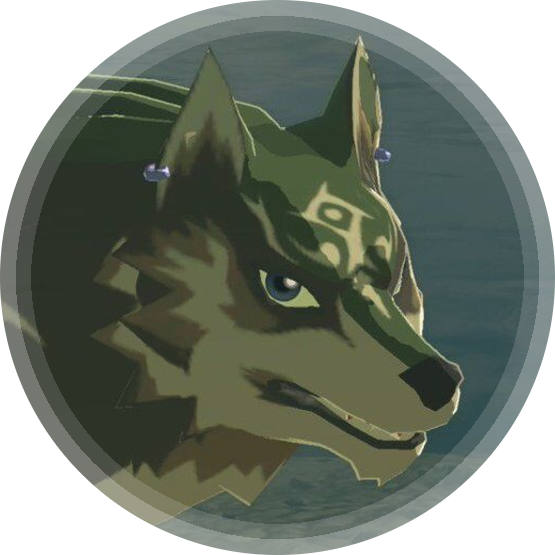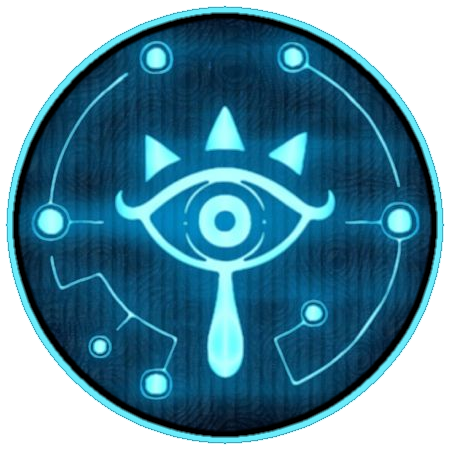This small, inconspicuous shop is one of my favorite examples of immersive world building in videogames. Most players probably won’t visit this shop more than once, or might be a regular customer but don’t pay attention to the finer details, but there is a LOT of small but interesting stuff to discover here.

It starts with the shop sign. Most other shop signs in Hateno are made of painted wood, while the dye shop signs are made of dyed cloth, and not just dyed in any random color - this is Tyrian Purple, which was THE single-most expensive dye in medieval times and usually reserved for nobility. You need approximately 10,000 murex shellfish to produce a single gram(!) of that stuff, just to put it into perspective.
To use that kind of dye for something mundane like a shop sign is more than just a flex - it is bragging of the highest magnitude, like when a blacksmith would casually display a shop sign out of solid gold or a weaver made a giant banner out of hand-painted silk. I do not think that it was a mere coincidence that the environmental artist chose that shade for the shop signs.
The script on the sign can be translated to “COLORS”. The Hylian Script can be a bit awkward as a lot of Hylian letters are identical but this translation is pretty straightforward.

Behind the shop there are huge, already dyed swathes of fabric - underwater. Why are they underwater? Because even “all natural” dye can be hazardous and has some really nasty stuff in it, for example ammonia (… from fermented urine…) Medieval dyers often used a nearby stream to rinse those chemicals and leftover dye out of the fabric so it would neither stink nor stain.

The devs even made sure to place the dye shop downstream from the communal cooking area. You shouldn’t cook with colorful water, just like you should never eat yellow snow …

The shop has a greeter - Senna, who is the wife of the shopkeeper, and seemingly the only person in the entirety of Hyrule rocking cornrows. And just in case you wondered why some NPCs look like someone hit the randomizer button in the Mii Creator - that is quite literally the case. Nintendo used a modified version of the Mii Creator to generate most of the “random” NPCs - the ones that aren’t important for the overarching story.
But lets get inside the shop already.

Right next to the entrance, there are tons of already dyed bundles of fabric, neatly organized by color, with little notes stuck to them - maybe descriptions of the cloth in question, or price tags? They’re illegible so we can only guess.
The material however is likely loden cloth (wool). You can also make “natural” fabric out of flax (linen) and there are a lot of fields around Hateno, but most of the crops in that area are veggies and Hateno is the only settlement with a huge herd of sheep - in fact, Hateno even has more sheep (15 plus 2 that were stolen by monsters) than the rest of Hyrule combined (only 12 total).


There are a lot of unique items scattered across the shop, like for example these little vials and the distilling flask - items that don’t appear anywhere else in Hyrule, so they were likely specifically created for this shop. Amongst these unique items is also an inkstick sitting in a mortar filled with slightly tainted water - and not just any color, but the tyrian purple again.

Most other dye colors in the shop are bottled up (like the green and white to the left) but transporting glass bottles with VERY expensive wares inside is not a good idea if you have to run from monsters all the time. A dry block of soldified dye is safer to handle and doesn’t lose all value if it breaks.
Personally, I think at least this purple dye is imported from Lurelin. Since they’re the only village directly at the sea, they would be the most likely to catch large amounts of murex shellfish, and since it is probably easier to transport a gram of dry dye instead of ten thousand shellfish, I wouldn’t be surprised if they’re processed right in the village.
Also, some of the children here are wearing necklaces with ornaments that look a LOT like murex shells. I highly doubt these are just coincidences.

And guess what? The ONE kid in Hateno who also has such a necklace just happens to be the son of the Dye Shop owner. Maybe his dad took him on a trip to Lurelin once or brought him a souvenir.
That little brat also has an incredible attitude. But the necklace is more important right now.

As for Hateno, there is a seemingly useless road from the village down to the sea, and nothing of interest down there… but from there, it would be easy to reach the docks in Lurelin by boat.
The other two possible routes would require traders to cross a mountain without proper roads but riddled with monsters, or travel for weeks across half of Hyrule just to avoid the mountains separating Lurelin from the mainland.

But back to the shop - we’re not yet done here =)
The walls are plastered with posters of example dye ingredients for all availiable colors. Similar posters can be found inside of most stables, but those are for dishes like carrot cake and pumpkin pie. If you try and cook the “recipes” from the dye shop, you end up with Dubious Food.

You can climb the platforms with the trapdoors even outside of the dyeing animation, and there are more unique items up here, like a measuring tape, spools with colored threads, wooden clothespins … someone took the time and effort to think about all the little items a medieval dyer would need for their work, and stuffed them into every nook and cranny inside the dye shop, even in places where most players wouldn’t even TRY to look.

Also, there are markings on the ground where Link should stand … and two separate trapdoors, since they have two different functions. The left trapdoor is where you stand when you want to dye stuff, and the right one is exclusively for removing dye so if you want to “go back to the original” Link will stand on the other trapdoor during the animation.
He also has two different reactions. When you dye something for the first time, he’ll look confused for a moment, and then gasp once he realizes what’s about to happen. If you want to remove the dye afterwards, he looks a lot more confident and not at all surprised, as he now knows what will happen. He even nods once he is ready to get splashed.
As for the area under the trapdoors, the one on the left (dyeing) is splattered with a ton of colorful dots and has scrap cloth in front of it, for customers to drip on so they don’t ruin the floorboards entirely (now they only ruin them a little). Messy streaks of dye everywhere.
The alcove on the right side (dye removal) looks bleak in comparison, with only a few very faded splashes on the walls. There is also only a single, relatively clean doormat in front of it, as customers emerging from this tub only drip clean water.

As for dyed armor in particular, it isn’t always just the color that changes. In some cases, other small details change as well, like for example the markings on the Barbarian Helmet. The painted patterns are not only colored differently, but shaped differently as well.

Now for the residents, even their very names might be dye puns, but I already wrote about that in a different post.
It might seem like a stretch at first, but a lot of the other NPCs follow certain naming patterns - for example, Koroks are usually named after plants (Hestu = chestnut, Maca and Damia = macadamia nut, Oaki = oak tree), Sheikah have names referring to fruit (Paya = papaya, Dorian = durian, Koko = coconut) and funnily enough, Rito are often named after food (Teba and Saki = Tebasaki = japanese fried chicken wings. Kass is called Kashiwa in the original = Kashiwa Udon = noodle soup with chicken broth. The elder is called Kaneli which is the finnish word for cinnamon. And then there is the over-used nickname of “Ravioli” for Revali…)
Long story short, it would not be that far-fetched if the names of the dye shop family were following a particular theme as well. Especially considering the sheer amount of other small but neat details this place has to offer.
Thanks for reading ;)


This is one of the most enjoyable posts I’ve read on Lemmy, thank you for writing it up!